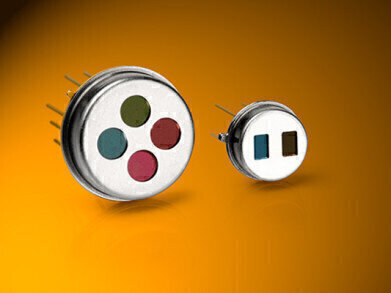Air Monitoring
FTIR technology gives air monitoring a sporting chance
Nov 13 2018
Air quality is becoming a very widely discussed topic in the context of exhaust emissions from vehicles and factory pollution. During the Beijing Olympics in 2008, factories were closed down and traffic was restricted to prevent the build-up of toxic gases having a negative effect on the performance of the athletes. With heavy exercise, oral respiration is the predominant mode of breathing and much larger amounts of pollutants are delivered to the lower airway resulting in a significant impact upon the respiratory tract. In high profile events, the impact of air pollutants and subsequent adverse ventilatory changes can cost those small increments of time that are all important.
Greenhouse gases and other air pollutants have spectral signatures in the mid infra-red region of the spectrum. This creates an opportunity for infra-red sensing technology to play an important role in measuring the air quality at major sporting events and assessing the role that air pollution has on influencing performance.
Fourier transform infrared spectrophotometry has become a well-established method to measure the concentrations of air pollutants. An FTIR interferometer splits one beam of light from a broadband source into two using a beam splitter, transmitting the first beam to a fixed mirror and the second to a mirror that is translated back and forth very precisely so that the paths of the two beams are different. The device then recombines the beams and directs them through the sample to the detector. The time variation in the path difference between the two beams modulates each wavelength of the collected radiation at a unique frequency that is a function of the wavelength of the radiation and the velocity of the moving mirror. Breaking down the signal generated by the detector into these unique frequency components reveals how the individual wavelengths from the broadband source interact with the sample under test generating a molecular fingerprint.
Infrared detectors used at the heart of the FTIR spectrophotometer must have the following characteristics; wide spectral response range, high sensitivity, wide frequency bandwidth, good linearity. Laser Components offers DLaTGS pyroelectric detectors that are ideal for this demanding application. From their research and production facility in Florida they supply customers all over the world with these industrial grade thermal detectors. A pyroelectric infra-red detector responds to a change in IR radiation (heat) absorbed on its surface and they have a very wide spectral bandwidth. A pyroelectric crystal has an atomic structure that will move slightly in response to a change in temperature, rearranging the electric charge within the solid generating a voltage.
Instruments using FTIR techniques are being introduced to measure air pollution and the measurements are used to help organisers plan a strategy for their sporting events. For example, the Indian Cricket Board organised their test match schedule and venues based on seasonal variation in air pollution.
Digital Edition
IET 34.2 March 2024
April 2024
Gas Detection - Biogas batch fermentation system for laboratory use with automatic gas analysis in real time Water/Wastewater - Upcycling sensors for sustainable nature management - Prist...
View all digital editions
Events
Apr 30 2024 Melbourne, Australia
Apr 30 2024 Birmingham, UK
May 03 2024 Seoul, South Korea
May 05 2024 Seville, Spain
May 06 2024 Minneapolis, MN, USA


















